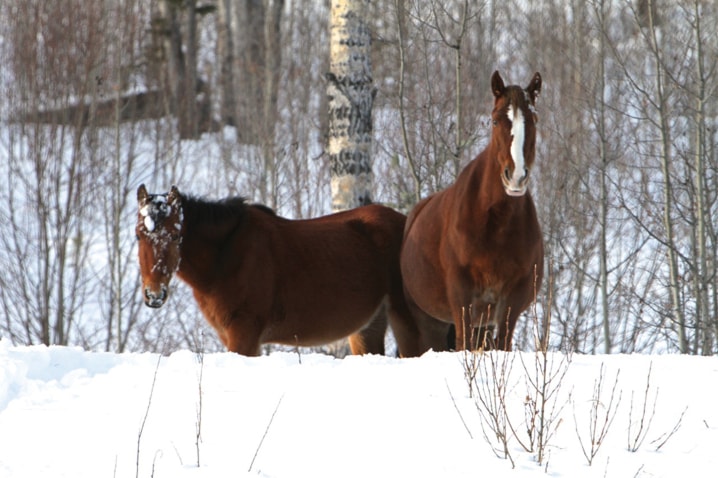There’s no need to reduce Alberta’s wild horse population, especially during this harsh winter, says the Wild Horses of Alberta Society.
Bob Henderson, president of the society, said there have been high foal mortality rates in the past two summers. The harsh winter is also likely to keep birth rates down because mares are drawing on their energy reserves just to stay alive.
These conditions provide a good opportunity to leave the herds alone and do another count to see if they are in fact over-populating their ranges or Mother Nature is doing its own culling, said Henderson.
“Even in a good year, the population reproduction rate is only about 10 per cent.”
Henderson doubts the population which roams a large swath of the West Country will grow this year.
“It may go down, or may remain stable. That’s why we said just leave them alone.”
The province’s Feral Horse Advisory Committee recommended last fall that a roundup or about 200 horses take place this winter. The committee was set up last year and includes representatives from the wild horse society, a veterinary association, SPCA, conservation, equestrian, farm and wilderness groups, the RCMP’s livestock investigator and other stakeholders.
Its decision took into account a growth in the horse population from 778 animals counted in March 2012 to 980 by the following spring. The population was around 200 horses in 2006, says Alberta Environment and Sustainable Resource Development, which does a helicopter count each March.
Wildrose environment critic Joe Anglin accused the PC government of going ahead “without a clear objective or enough scientific data to support a cull.
“Wildrose supports scientifically supported methods to manage and protect a health herd of feral horses,” he said in a statement released last Friday.
If it is necessary to reduce the horse population, Wildrose supports an adoption program “instead of the current slaughter method the government is endorsing,” he adds.
Alberta Environment spokesperson Nikki Booth takes issue with calling the roundup a cull, saying the horses are captured. While some are sent for slaughter, the province knows that horse owners and ranchers take some for personal, work and recreational use, although specific numbers are not available.
“People tend to make it sound like all of them are going to slaughter, and that’s not the case,” said Booth.
Booth said feral horses have few natural predators and numbers can rise quickly.
“When that happens it can put the land out of balance. Feral horses eat the same food as the livestock and the wildlife in the area.
“So when you have a population that grows significantly you are putting pressure on the food sources for all animals. You’re also putting pressure on the native plants, which is what they are eating.
“We are trying to maintain a balance.”
Booth said the province isn’t trying to get rid of the horses, only to maintain the population at a level that doesn’t damage the environment or harm other wildlife.
Henderson said it’s not the horses that do the damage. Tens of thousands of cattle are grazed in the area every summer, compared with fewer than 1,000 wild horses.
Clear cut logging is also responsible for a lot of environmental damage, he said.
Horses were last culled two years ago when 212 horses were rounded up, most of them going to slaughterhouses, said Henderson.
Henderson admits it is frustrating refighting the same battle almost every year to try to stop the roundup. His group believes educating the public about what is happening is the best hope for the horses.
pcowley@www.reddeeradvocate.com
